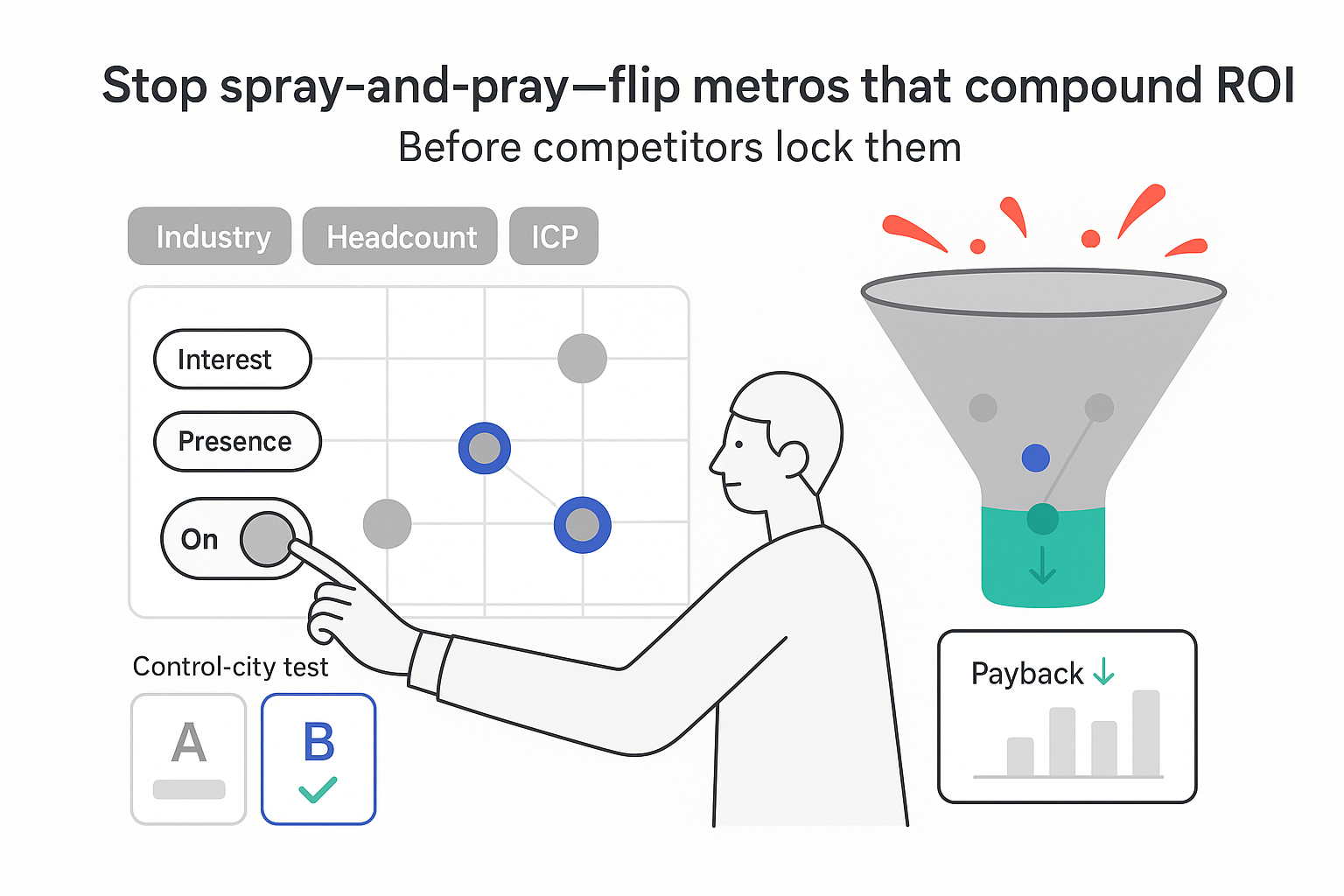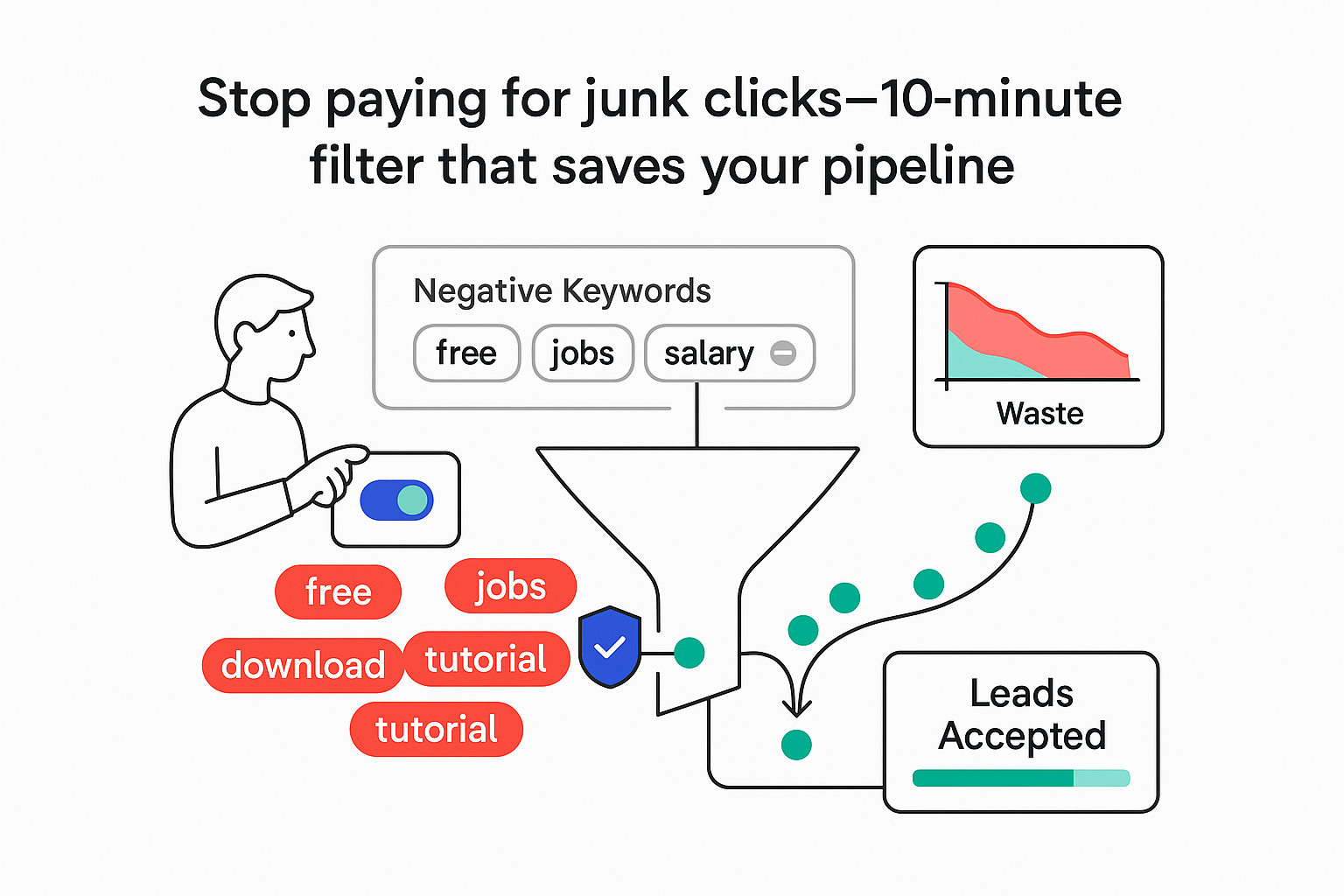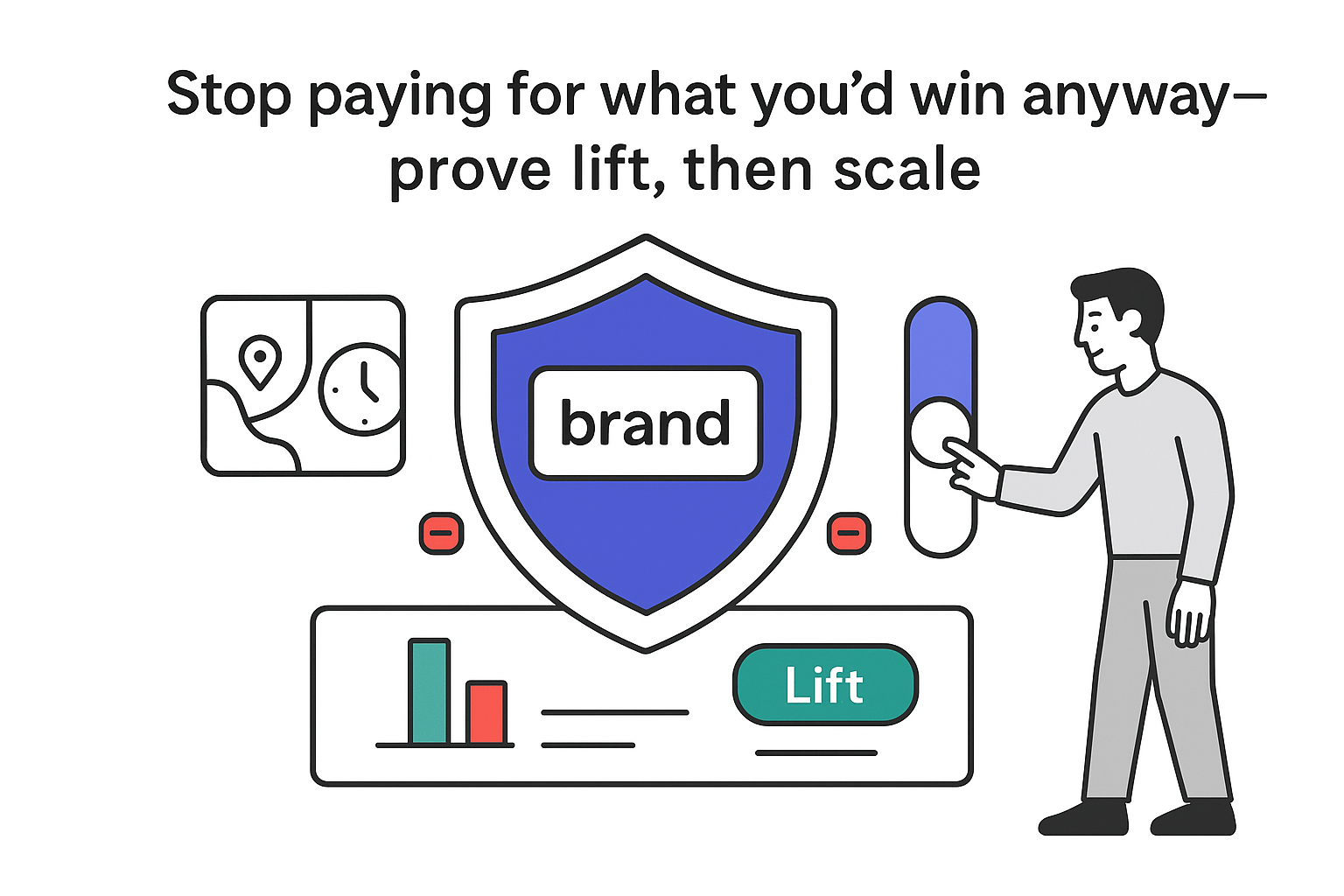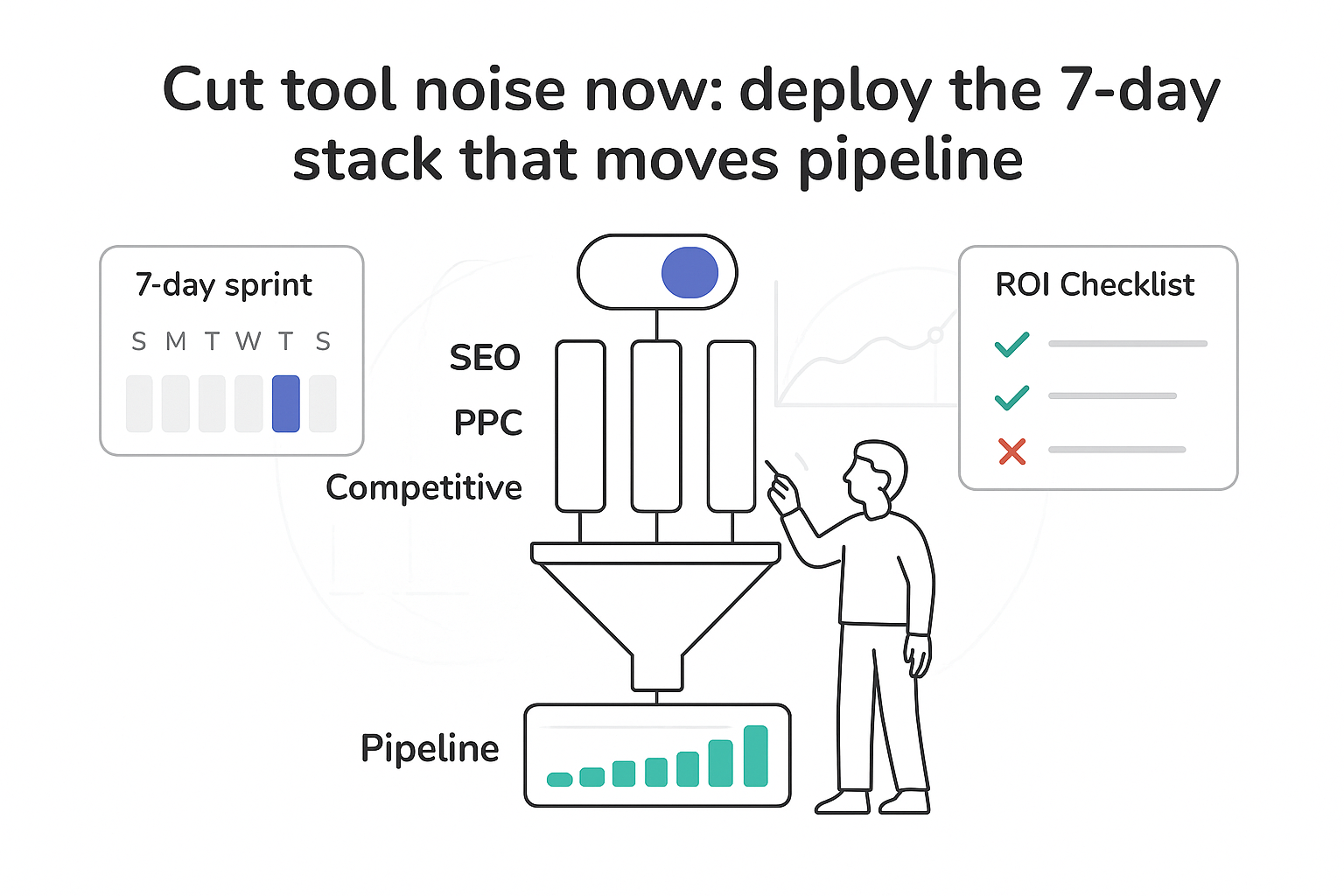You want growth without babysitting. You want clear numbers, faster momentum, and a partner who actually owns outcomes. The question shows up, straight and simple: do you build SEO inside your team or bring in an expert pod? I walk through the tradeoffs for B2B service firms that need pipeline, not vanity traffic, and keep the focus on time to impact, cost, and risk.
Agency or in-house: how I frame the decision
If your brand needs speed, accountability, and predictable delivery, an agency often wins in the first 6 to 12 months. In-house teams shine once needs stabilize and the work shifts to coordination and volume. In many cases, a hybrid approach balances ownership with specialist execution.
- Agency
- Cost: fixed retainer with tool amortization, minimal hiring overhead
- Time to impact: 30-60 days for technical fixes and quick wins; 90-180 days for compounding growth
- Risk/ownership: shared risk with a clear statement of work, service levels, and easier replacement if fit is off
- In-house
- Cost: higher fully loaded cost (salaries, benefits, tools, training)
- Time to impact: 60-120 days to hire and ramp; 90-180 days to meaningful lift after onboarding
- Risk/ownership: higher single-point-of-failure risk and full management burden sits with you
- Hybrid
- Cost: split across roles and pods; you carry the internal owner and bring in specialists for execution
- Time to impact: 30-45 days for early wins; compounding typically in months 3-6
- Risk/ownership: internal context stays strong while execution risk is shared
What in-house really costs (and how long it takes)
An in-house team is more than salaries - it is total loaded cost plus time to ramp. For the US and UK, here is how the math typically looks (directional ranges informed by sources like Glassdoor, Levels.fyi, and regional salary surveys; location and seniority drive variance).
- Salaries (US | UK)
- Head of SEO/Growth Lead: 140K-200K | 80K-120K
- Technical SEO: 90K-140K | 55K-80K
- Content SEO/Managing Editor: 70K-110K | 45K-70K
- Digital PR/Outreach: 70K-110K | 40K-65K
- On-costs and overhead
- Benefits and taxes: 20-35% of salary (for context, the UK employer National Insurance contribution rate is 13.8%)
- Training and certifications: 1K-3K per person per year
- Tools: 1.5K-3.5K per month for a serious stack
- Recruiting and ramp: 15-25% of first-year salary if using a recruiter; 60-120 days to hire and onboard - see breakdowns of cost per hire
- Management time: 10-20% of a senior leader’s time to direct, coach, and QA
- 12-month TCO snapshots
- Single mid-seniority Technical SEO (US): 90K salary + 25% on-costs, tools share, training → 120K-140K all-in
- Small team of three (strategy, tech, content) in the US → 300K-420K all-in when you include taxes, training, tools, and management time
- UK costs often land 25-40% lower on salary, though tools and training are similar
- Time to competence
- Hiring window: 45-90 days
- Ramp to full speed: 30-60 days after start
- Meaningful results: typically 90-180 days once the person or team is in place
Here is the catch I see most often: one person rarely covers deep technical SEO, content ops, analytics, and digital PR at a high level. You either hire generalists and trade depth for coverage, or you hire multiple specialists and accept higher cost and coordination overhead.
What an agency retainer typically buys
Agency pricing reflects bundled skills and tool amortization. You pay a monthly retainer and get strategy, technical SEO, content production, digital PR, and reporting. I look for crystal-clear scopes with service level objectives tied to outcomes, not activity alone.
- Common retainer tiers for B2B SEO (ranges vary by complexity and market)
- Starter: 4K-7K per month for technical cleanup, content planning, and light production
- Growth: 8K-18K per month for sustained momentum (tech SEO, content clusters, digital PR/link earning, CRO support on key templates, dashboards)
- Enterprise: 20K+ per month for multi-market or multi-brand setups and complex stacks
- Typical inclusions
- Strategy and planning mapping keywords to stages and pages
- Technical SEO audits, fixes, and schema setup
- Content operations, briefs, and publication workflow
- Digital PR, outreach, and link earning
- Analytics and reporting in GA4 and Looker Studio with clear non-brand vs brand splits
- Costs you avoid
- Recruiting and turnover risk
- Tool licenses at enterprise tiers
- Training and enablement across SEO, content, PR, and analytics
- Accountability and risk transfer
- Scope clarity: named deliverables, monthly outputs, and a readable roadmap
- SLAs and SLOs: e.g., number of technical fixes, non-brand click growth ranges, content ship dates, monthly PR placements
- Off ramps: if fit is wrong, you can pivot faster than replacing an internal hire
When you assess agencies, look for public proof points like Awards and detailed Case Studies, plus transparent leadership and principles, such as published Leadership and Core Values.
Why B2B SEO behaves differently
B2B search is different. Traffic is lower, intent is sharper, and sales cycles are longer. I do not chase mass terms - I build a clean path from pain to pipeline.
- Buyer groups and committees: multiple roles search with different language (finance leader, ops owner, evaluator seeking proof and pricing logic)
- Low-volume, high-intent keywords: fewer visits, higher value per visit; comparison pages, solution pages, and use-case hubs outperform generic blogs
- TOFU/MOFU/BOFU mapping: education that pulls the right audience, mid-funnel frameworks that qualify, and bottom-funnel proof (case studies, ROI stories, vendor comparisons)
- Lead-gen foundations: fast pages, clear templates, useful schema, clean internal linking, and forms that do not choke curious readers
- Pipeline tie-in: measure by SQLs, pipeline, and ACV impact - separate brand from non-brand to see what SEO actually drove
A pure generalist approach often stalls. I connect content to measurement and measurement to revenue - simple, repeatable, and predictable.
Picking and running a practical SEO stack
A solid stack saves time and lifts quality. You can license tools yourself or rely on vendor access your partners already carry; either way, verify that seats, permissions, and enterprise features cover your workflow.
- Core stack components
- Research and link data
- Query and index data
- Crawling and log analysis
- Content optimization
- Analytics and dashboards
- Digital PR monitoring and coverage tracking
- Cost comparison (typical)
- In-house licensing for a serious stack: 1.5K-3.5K per month
- Amortized via partner retainers: often included inside the retainer
- Practical guardrails
- Ensure shared access to dashboards and raw data
- Validate high-impact recommendations with more than one data source when possible
- Budget not just for licenses but for the time needed to keep the stack tuned
A simple ROI model I trust for planning
Leaders care about payback. I use a straightforward model with inputs you already track. Swap in your actual conversion rates and ACV - that is the fastest way to make the math honest.
- Inputs
- Baseline non-brand organic sessions per month
- Expected uplift by quarter (conservative, base, and stretch)
- Lead conversion rate (session to form fill or call)
- SQL rate from leads
- ACV and close rate
- LTV and gross margin if you want to model profit, not just revenue
- Example (illustrative, not a forecast)
- Traffic: baseline 10K non-brand sessions per month
- Uplifts: Month 3 at +15%, Month 6 at +35%, Month 12 at +70%
- Leads: 2.5% lead rate → 10K sessions = 250 leads; +70% uplift → 425 leads
- SQLs: 35% of leads → 87 SQLs baseline; 149 SQLs with uplift
- Revenue: ACV 25K; 15% close of SQLs → ~13 to 22 deals per month → 325K to 550K in new ACV, before expansion and retention effects
- Payback window patterns I expect
- 30-90 days: quick wins from technical fixes and content refreshes (recover lost traffic, improve conversion)
- Months 3-6: compounding as topic clusters land and internal linking spreads authority
- Months 6-12: significant compounding as digital PR earns coverage and high-intent pages climb
- Guardrails
- Separate brand vs non-brand to isolate SEO impact
- Track CAC and blended CAC; organic lowers blended CAC over time
- Grade by SQLs and pipeline, not just raw leads
If you sell on a recurring revenue model, the rule of 78 can help illustrate how earlier wins compound over a year. For a practical walkthrough, see this HubSpot explainer.
A decision rubric to keep you honest
I turn the agency vs in-house choice into a small set of questions. Score each with your context, not a generic best practice.
- Competitiveness
- Heavyweight competitors with big content volume: agency or hybrid usually wins (you need depth in tech SEO, content strategy, digital PR)
- Clear long tail and modest competition: in-house can work if you have a strong content operator and time to iterate
- Volume of effort
- Need weekly briefs, drafts, and updates: in-house writers can be cost-effective once the playbook is set
- Need specialized fixes and outreach that change monthly: an external pod handles varied tasks without idle time
- Complexity
- Migrations, international structure, or messy tech stack: outside depth helps
- Stable site on a simple CMS with clear templates: an in-house generalist with light external support can carry it
- Permanence of the need
- Short burst for heavy setup: bring in external help, then hand routine work inside
- Ongoing multi-year program: hire a leader and use external specialists for spikes
- Doing vs coordinating
- Heavy stakeholder management: an in-house lead is smart
- Focus on shipping fixes and content: a specialist pod moves faster
- Fractional needs
- If you need 10 hours of digital PR, 15 of technical SEO, and 20 of content each month, a single hire will struggle to cover that range. In some cases, Fractional CMO Services can complement an external SEO pod or a small in-house team.
- Validate before committing
- Baseline audit: crawl health, index status, internal linking, query splits, and rankings
- Forecast ranges: tie targets to non-brand clicks, top 10 rankings for target pages, and expected SQLs
- Pilot plan and SLOs: e.g., 20% non-brand click lift in 90 days, ship 6-12 high-intent pages per month, fix top technical items within 30 days, and 3-5 quality placements per month
- Reporting cadence: weekly check-ins, monthly strategy reviews, quarterly plan resets
The hybrid operating model that tends to win
The most resilient setup blends a sharp internal owner with a specialist pod that ships. I use a simple RACI and a 90-day operating plan to make roles and outputs unambiguous.
- RACI snapshot
- Strategy and roadmap: accountable in-house marketing lead; responsible external strategist; sales and product consulted; leadership informed
- Technical SEO: responsible external technical lead; internal owner accountable; engineering consulted; content informed
- Content ops: responsible external content lead and writers; internal owner accountable; SMEs consulted; sales informed
- Digital PR: responsible external PR specialist; internal owner accountable; execs consulted for thought leadership; sales informed for coverage enablement
- Analytics and reporting: responsible analyst; internal owner accountable; finance consulted for ACV and margin; leadership informed
- A 90-day operating plan
- Days 1-15: technical audit, content gap map, internal linking plan, analytics cleanup; fix easy wins (sitemaps, thin tag pages, slow templates, missing schema)
- Days 16-45: publish first BOFU cluster and refresh outdated high-intent pages; build comparison and use-case pages aligned to how buyers search; start steady digital PR through expert commentary and data
- Days 46-90: scale production with briefs and guidelines; ship monthly PR assets (e.g., data studies, teardowns); roll out internal linking and FAQ blocks based on Search Console queries; align dashboards to non-brand growth, priority page rankings, SQLs, and influenced pipeline
- Trust signals I look for when assessing a partner
- Recognized work reviewed by credible industry bodies - public Awards are a helpful proxy
- Named experts with public bios and speaking history - published Leadership and Core Values build confidence
- Customer stories that show baseline, work done, and outcomes (pipeline and ACV impact) - look for detailed Case Studies and a clear Client Portfolio
- Useful resources that reveal how they think and measure - review their Learning Center or Blog
A mild contradiction is worth stating. In-house feels safer because you see the person every day. An external partner feels safer because you can change course if work stalls. The way through is simple: keep strategy, business context, and reporting inside; use a specialist pod for execution, tooling, and speed. That balance keeps ownership where it belongs while removing the delivery risk that keeps you up at night.
If you are weighing agency vs in-house for a B2B service model, start with a short diagnostic: capture your baseline, build a forecast tied to SQLs and ACV, and set SLOs for the first 90 days. Run the math on both paths using total cost and realistic time to impact. Then choose the model that gets you compounding returns without adding management drag. If you want outside perspective, explore Why WSI?, read The WSI Story, or Contact Us for a tailored diagnostic.







.svg)